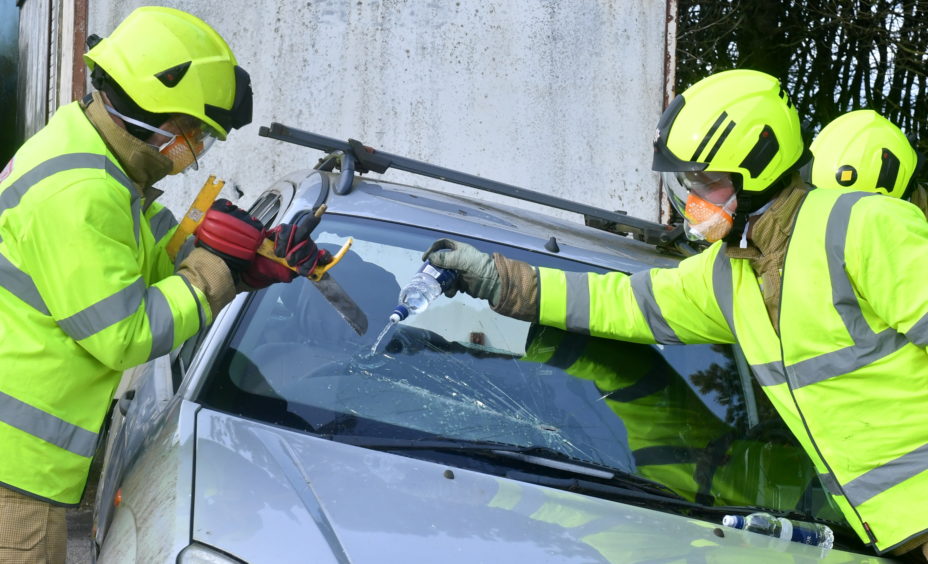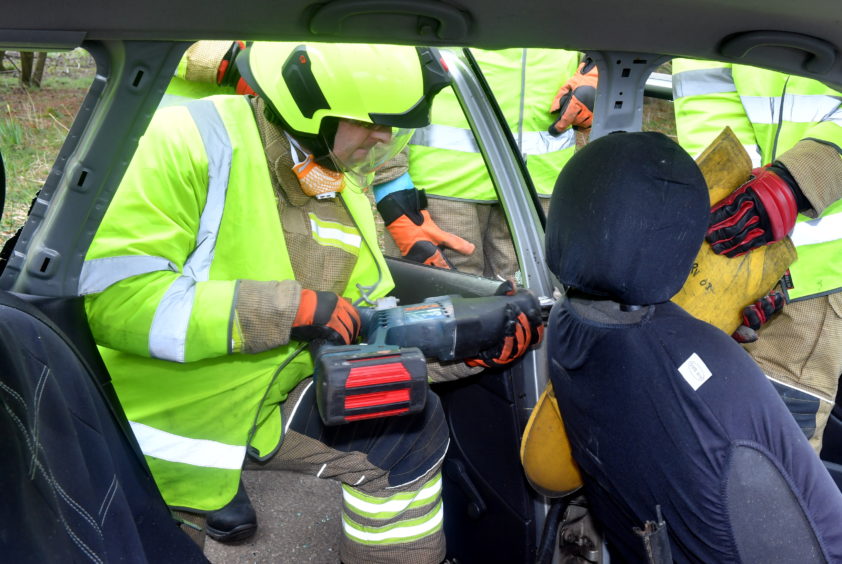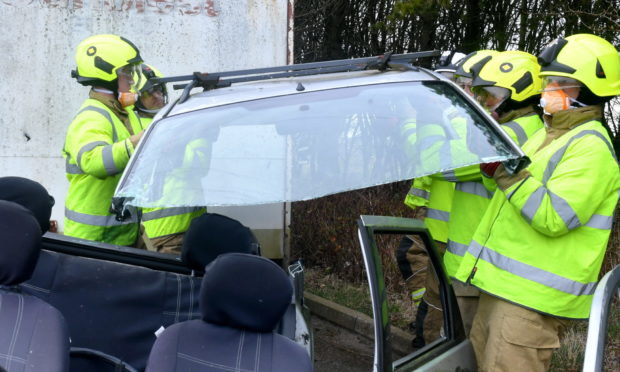Coming to the rescue of people involved in car crashes might not be a daily occurrence for fire crews across the north of Scotland.
But rigorous training exercises allows them to prepare for every eventuality whenever an accident does happen.
Russell Birkett, watch commander at Peterhead fire station, said: “Every day on the job is different” but stressed it was “important for crews to be trained on what to do with this sort of situation.”
The watch commander surveys the scene of an accident and devises a plan of action on how best to remove people from the vehicle.
Mr Birkett said: “I come up with a plan and the crews put it into action.
“It’s very much a team effort where, if they notice something, they feed it back to me and the plans to remove people safely out of the vehicle could change.”
Removing the casualty or casualties from the vehicle safely “is the main priority” and the fire crew know how important it is to “create as much space as possible for those who are in the vehicle.”

This involves using tools to break glass, cutting off doors and, sometimes, removing the roof if it’s safe to do so.
The question of how someone is rescued is dependent on a number of factors. The location of the accident and type of vehicle can determine what type of tools are used to remove someone safely.
Crew commander John Masters explained there were two ways people can be trapped. He said: “Physical entrapment is when the person is okay, but they are unable to open the door or climb through the window.
“In this sort of situation, it’s easier to remove them from the vehicle.”
However, there is also medical entrapment which can present different challenges. Mr Masters said: “This is when injuries keep someone in the vehicle.”
Bill Davidson, owner of Davidson of Rora allows the crews to perform their training exercises on some of the old cars at his yard and Mr Birkett expressed his gratitude for being offered such resources.

Mr Davidson said: “If this helps the fire crews to save the life of someone involved in an accident, that is enough payment for me.”
Saving lives
I wanted to take part in a safety training exercise with the fire service because I was determined to gain a better understanding of how these brave people save lives.
Fortunately, I have never been involved in a serious car accident before, so I didn’t know exactly what the fire service did in these sort of situations to help people.
Before I was covered with a soft sheet to prevent any dust or glass from falling on me, one of the crew members asked me my name and if I was injured in exactly the same way they would have done in a real-life accident.
I couldn’t see very much while the sheet was over me, but I heard a lot of noise from the tools which were being used and felt vibrations from the implements which I had been told to expect beforehand.
The crew had originally intended to cut the roof off the vehicle, but were forced to change their plans on further inspection because it wouldn’t have been safe to do so.
While it was only a training exercise, it did feel quite daunting, but the crew members communicated with me throughout the whole experience to ease any nerves I had and keep me fully informed on what they were doing.
